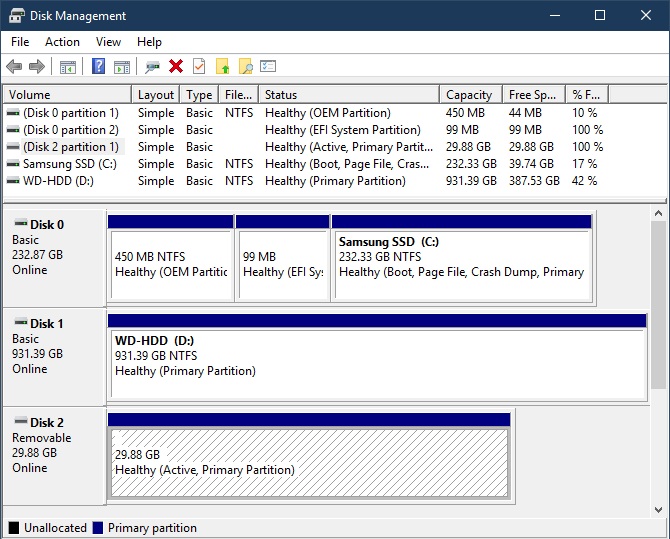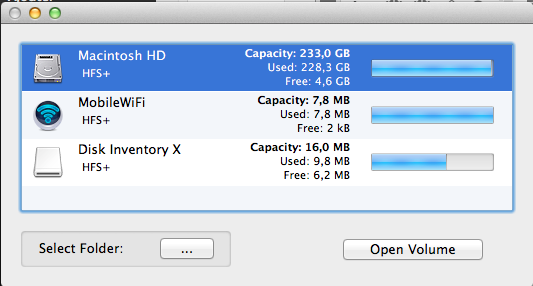
- DISK INVENTORY X DOESNT OPEN HOW TO
- DISK INVENTORY X DOESNT OPEN INSTALL
- DISK INVENTORY X DOESNT OPEN UPGRADE
- DISK INVENTORY X DOESNT OPEN FULL
- DISK INVENTORY X DOESNT OPEN DOWNLOAD
Unfortunately, it does it on the system, not where the user wants to store it.
DISK INVENTORY X DOESNT OPEN DOWNLOAD
While Windows allows the user to select in which folder to download the content we want, especially when it comes to games, additional content of an application… in macOS, it is the system that is in charge of storing it.
DISK INVENTORY X DOESNT OPEN INSTALL
macOS, unlike Windows, manages the content downloaded by the applications we install in a very different way. Unfortunately, free up space on the Mac it doesn’t just mean delete apps, but includes checking how much space the system is taking up.
DISK INVENTORY X DOESNT OPEN HOW TO
If the reason is lack of space, you have come to the right article since in this article we are going to show you how to free up space on mac. If your computer runs slower than usual, it could be for two reasons: you haven’t formatted it for a while and installed the corresponding version of macOS from scratch, or you’re running out of space on your hard drive. Although Apple usually follows its path in many ways, in this it maintains the usual trend of the industry.
DISK INVENTORY X DOESNT OPEN FULL
Or, you will fill up the disk until the disk full alert at which time your only option will be to perform an Erase and Install.As cloud storage platforms have become a commodity necessary and used by millions of users, we have verified how currently, manufacturers continue to offering very little storage space on their teams. Maybe all that space is under macOS control and will be released as you need it. Otherwise, you can fill up the disk over time and see what happens. Were this me, I would probably backup my files, boot from my emergency backup, erase that SSD completely, and reinstall macOS from scratch. My thinking is that I have no idea what this hidden space is nor why there's so much of it. I have a general understanding of APFS but that's it. Apple hasn't provided a great deal of documentation for those of us who are not programmers. Were there already files on the SSD before the conversion? I don't know a great deal about APFS and HFS+ conversion.
DISK INVENTORY X DOESNT OPEN UPGRADE
When you went through the macOS upgrade to Mojave or Catalina your SSD was converted from HFS+. I am gnawing on the possibility that space is somehow associated with the conversion from HFS+ to APFS. I don't think the APFS snapshots would consume that much space but no way to tell with Disk Utility. I can only account for about 32GBs partitioned for Windows and another 12GBs used by the other four partitions used by APFS. This will provide a full view of how the disk is configured.

On the top left is a small dropdown menu labeled View. You can also get a different picture by opening Disk Utility in the Applications folder. If you have an APFS formatted disk, then this will show information on the invisible partitions it creates. While you have Terminal active you might see what is displayed by entering: diskutil list. To turn off the display of invisible files and folders enter or paste the following command line and press RETURN.ĭefaults write AppleShowAllFiles FALSEĪlternatively, you can use one of the numerous third-party utilities such as InVisible or ShowHideInvisibleFiles - MacUpdate. At the prompt enter or paste the following command line then press RETURN.ĭefaults write AppleShowAllFiles TRUE Open the Terminal application in your Utilities folder.

You need to make hidden files visible in order to see them:Įnable Finder to Show Invisible Files and Folders Possibilities include Time Machine local snapshots and APFS snapshots, application data, etc. There is no way we can tell you what hidden files are on your computer. There are no such categories actually on the drive. The categories found in the Storage section of About This Mac is simply an arbitrary way of displaying files on your drive. If you have more than one disk/partition then repeat for each one on your Desktop. You will find the disk information displayed for Capacity, Available, and Used.


Press Command-I to open the Get Info window and look at the topmost panel displayed. To find out the correct information for any disk: Select a Desktop disk icon. Ignore the Storage information as it is typically wrong. What is 'Other' and 'Purgeable' in About This Mac?įiles That Make Up the 'Other' Storage Category, and How to Remove Themĭo not use the information from the Storage section of the About This Mac dialog.


 0 kommentar(er)
0 kommentar(er)
